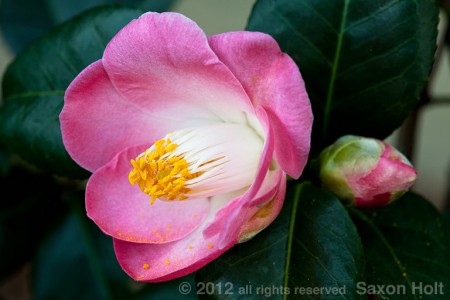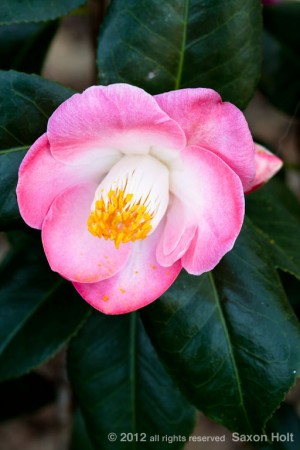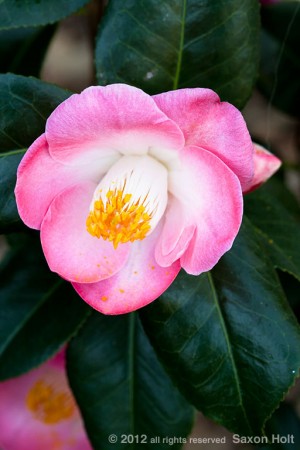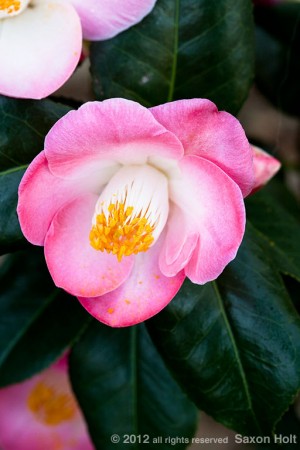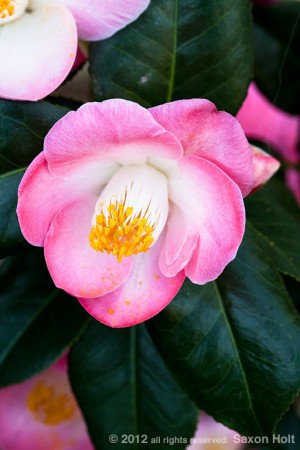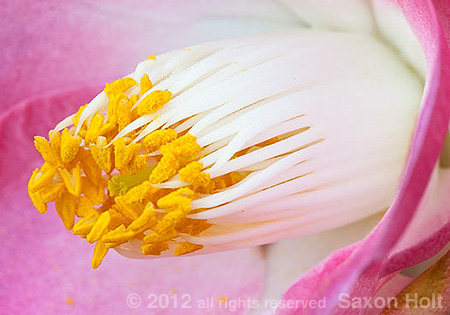 “Why, when stabilization is built into many cameras and lenses, is a tripod so important ?” asked a student at a recent workshop.
“Why, when stabilization is built into many cameras and lenses, is a tripod so important ?” asked a student at a recent workshop.
I always ask my students to bring tripods to our photography workshops and stabilization is not the main reason. It is true that a good tripod will provide a rock solid, steady platform for a tack sharp image, but it is even more important as a composition tool.
Even so, it is hard to beat a tripod to get those super sharp images that can stand up to huge enlargements. For instance, the lead photo is only a small part of the original photo, but I was so intrigued by the flower parts I wanted to make a really close study of the fused stamens of this Camellia ‘Sunny Side’. The long white filaments with yellow anthers seem to be a sea urchin, gobbling yellow krill.
Here is the original photo.
Without taking the original photo on a tripod on a windless morning there is no way I could have cropped and enlarged the photo and have it remain so sharp and clear, but this next series will show why I really needed my tripod that morning.
Camellia ‘Sunny Side’ bloomed for me the first time this year, a new camellia I chose because of its profuse and abundant flower parts that seem alluring and fecund. It is my business to have good photos of plants and flowers that intrigue me, so when it bloomed I planned my shoot and grabbed my tripod.
Unfortunately, being the first year it bloomed, there were not a lot of flowers and the deep green leaves made the photo seem particularly dark and uninspired.
But with the camera on the tripod I could build the photo and add flowers where they might have been on a more mature plant.
Looking through the camera viewfinder, secure on the tripod, I can see the empty spaces on the ground beyond the prime flower. The camellia is still small, so it is fairly easy to see exactly where to place “spare” flowers.
I decided I would want the hint of another flower in the same focal plane as the main blossom, so rested a new flower carefully on the sturdy leaves.
Then finally I added some more color in the remaining holes, making the final composition.
Now that the photo is all filled out one could imagine ‘Sunny Side’ as a mature shrub. Yes, the scene has been enhanced to serve the way I “see” it, but unlike my last lesson here at Gardening Gone Wild, Photographing Foliage, where I cloned in some extra flowers in Photoshop, this time I added the extra color at the time of the shoot – thanks to the tripod.
I’m sure glad I took the time to create the flower portrait. Last week-end I found “Sunny Side” done in. A gopher decided its tender trunk needed gnawing.

